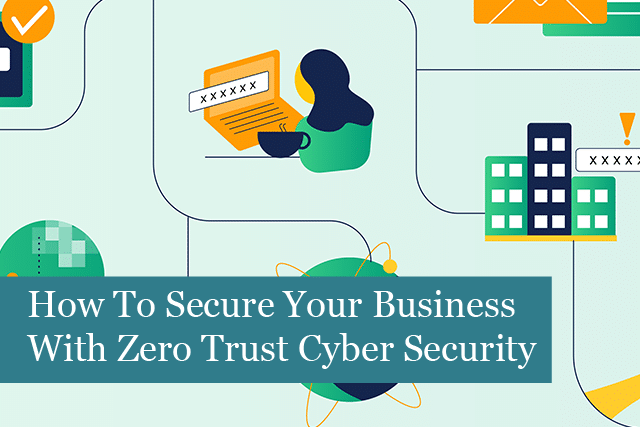
Is your business’s digital defence foolproof? That’s the question in today’s world.
Nowadays, threats to businesses aren’t just about physical issues like theft; they come through digital channels—data, networks, and internet connectivity.
Up until recently, internet security mostly relied on ‘trust but verify.’ Connections got access automatically if they proved they were legit, like using passwords and spam protection.
Now, there’s a shift to a zero trust model. It’s about ‘never trust, always verify,’ meaning stricter access requirements and more user monitoring within the network.
This shift can make a big difference in today’s digital landscape. In this blog, we’ll explain why and how to implement it.
What is zero trust, and what are the principles?
Zero trust is a security concept in IT. It says organisations shouldn’t automatically trust anything or anyone trying to access their network, no matter where it’s coming from.
Instead, everything and everyone needs to be verified before getting access.
Key principles of a zero trust cybersecurity policy include:
- Least-privilege access: Only allowing access to the parts of the network directly needed. For example, a finance person can access financial databases but not IT admin or HR.
- Micro-segmentation: Breaking the network into smaller segments. If there’s a problem in one, it won’t bring down the whole system.
- Continuous authentication: Monitoring user behaviour. If someone does something odd, the system reacts and blocks them, often using AI.
When done right, these principles work together to protect your digital assets.
Benefits of zero trust for businesses
Zero trust has several benefits, such as:
- Risk reduction: Even if a cyber attack breaches your firewall, the damage is limited, and downtime is reduced.
- Adaptability to hybrid and remote working: In the age of remote work, zero trust helps monitor various sources of network access.
- Enhanced data privacy compliance: Important for regulations like GDPR, limiting who and what can access sensitive information.
Implementation challenges
But implementing a zero trust cybersecurity policy can be tricky. Common issues include dealing with old systems, costs, and training.
Your current cybersecurity setup might not smoothly transition. Every network is different, so it depends on what you already have. You’ll need an IT expert to help, but the key is having a solid strategy.
Costs can be a barrier. Zero trust networks might need a hefty investment. It’s crucial to analyse the risk before deciding on the path forward.
And then there’s the staff and training. Some might find zero trust policies frustrating, as authentication and verification can slow things down. Regular training is essential for updates and changes.
Steps for adopting a Zero Trust cybersecurity policy
Here’s a basic framework to implement a zero trust policy:
- Assess current infrastructure: Check what you already have and how easy it is to change.
- Identify critical assets: Prioritise important databases and networks.
- Define access policies: Decide how the network allows or denies access.
- Implementation: Get your IT department or a consultant to put the new procedures in place.
- Training: Make sure everyone knows how to use the network and is aware of potential risks.
- Continuous monitoring and adapting: Regularly check the effectiveness of the zero trust setup and make adjustments.
How Mansys can help set up a zero trust security posture
Thinking about implementing a zero trust policy? Start by evaluating your current security measures. Are they good enough, or could a zero trust setup be better?
At Mansys, we aim to help by providing specialised services to boost efficiency, cut costs, and drive sales. Reach out for a chat if you want assistance with zero trust security. We’d be happy to explain why it’s crucial in today’s world.
Recommended Posts

Prepare for Windows 10 End of Life: What You Need to Know
18th July 2025

5 Ways Cloud-Based IT Solutions Can Empower Your UK Business
12th July 2025

Are you making the most of your Microsoft 365 licensing?
4th July 2025
